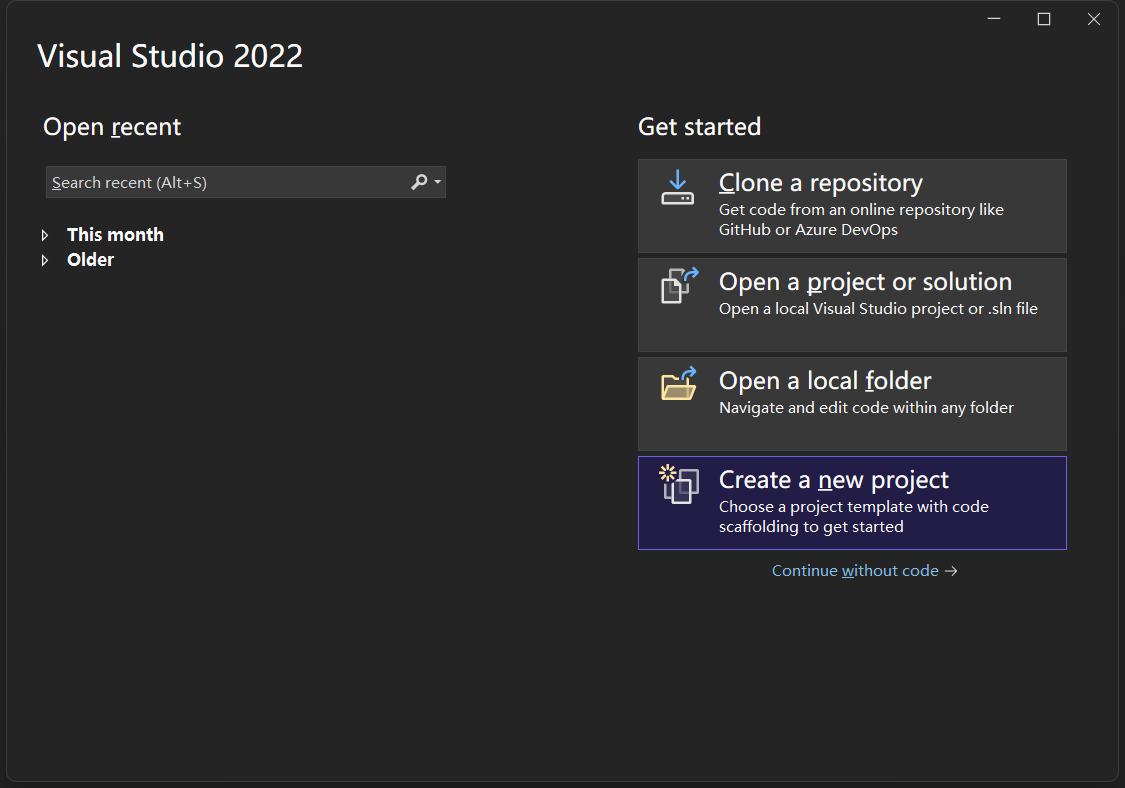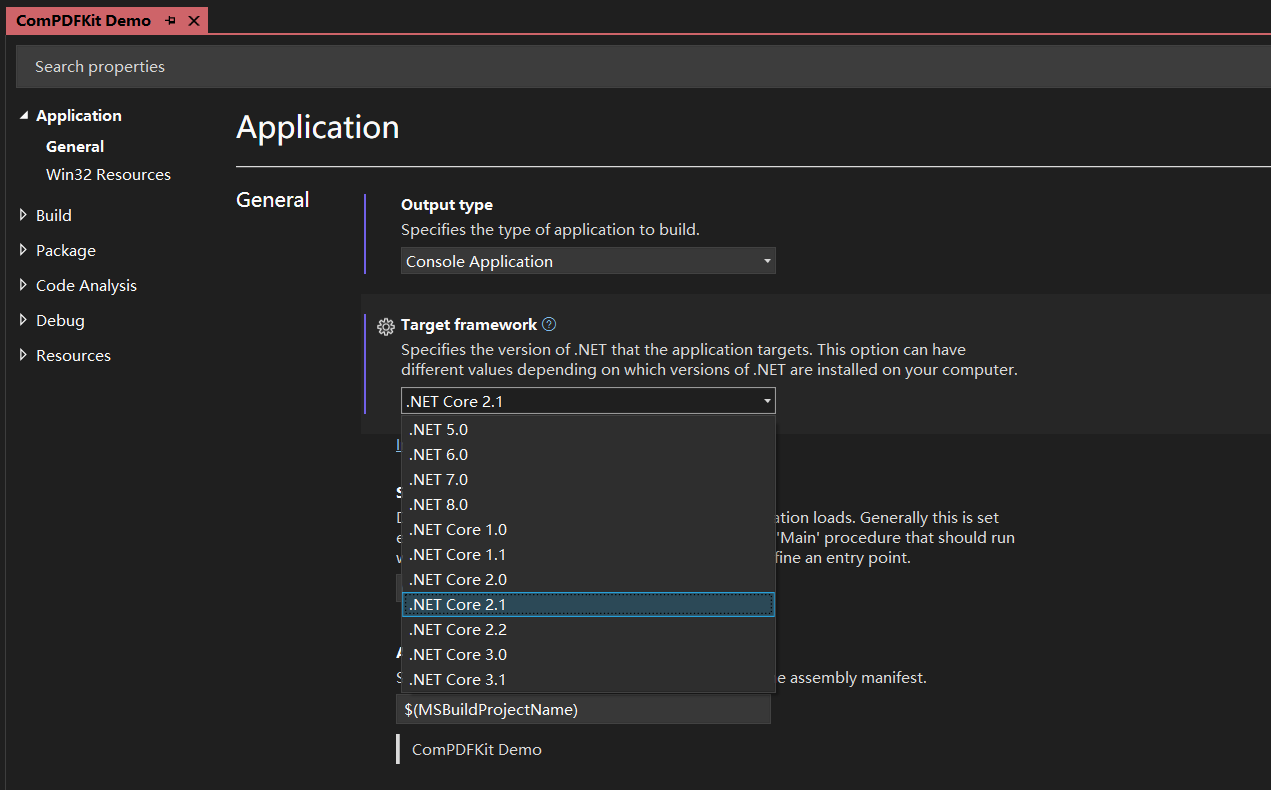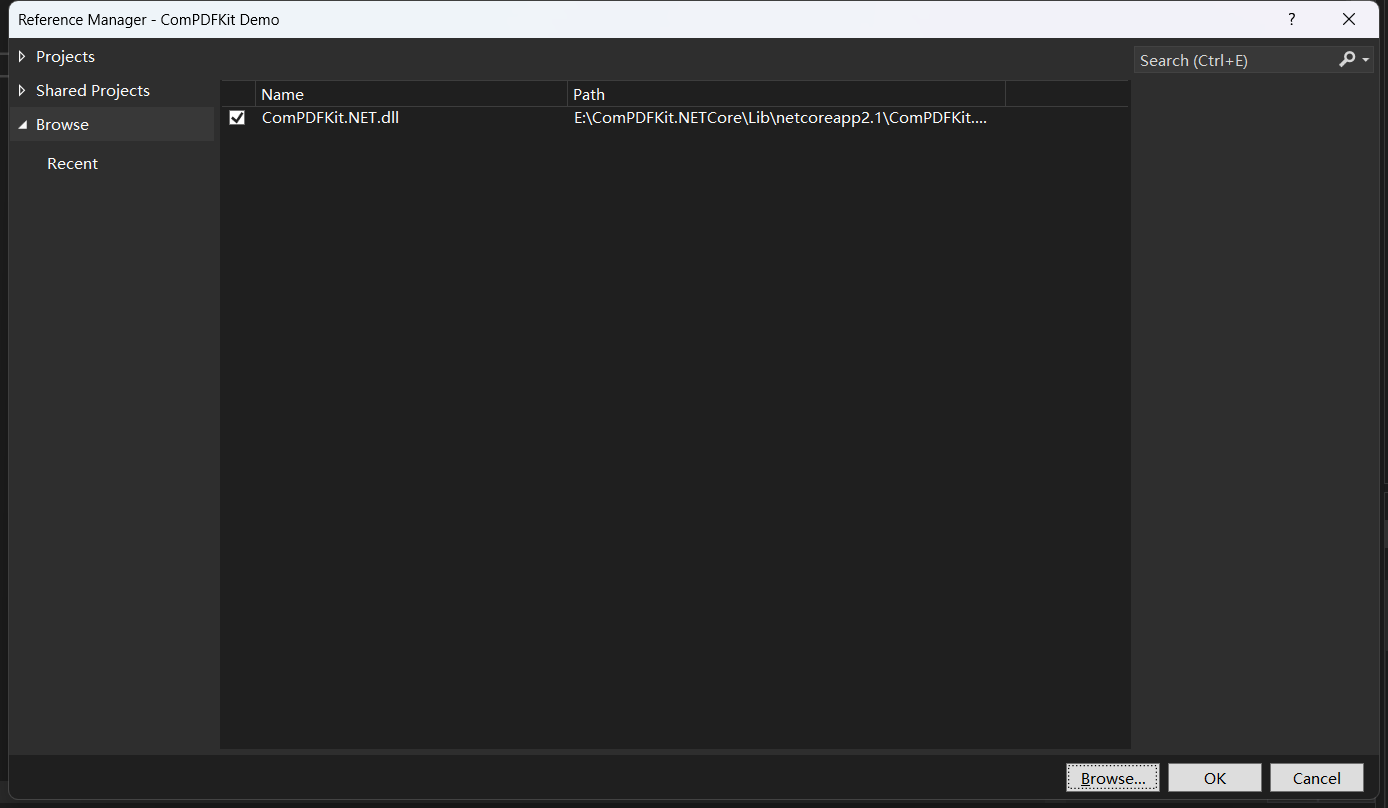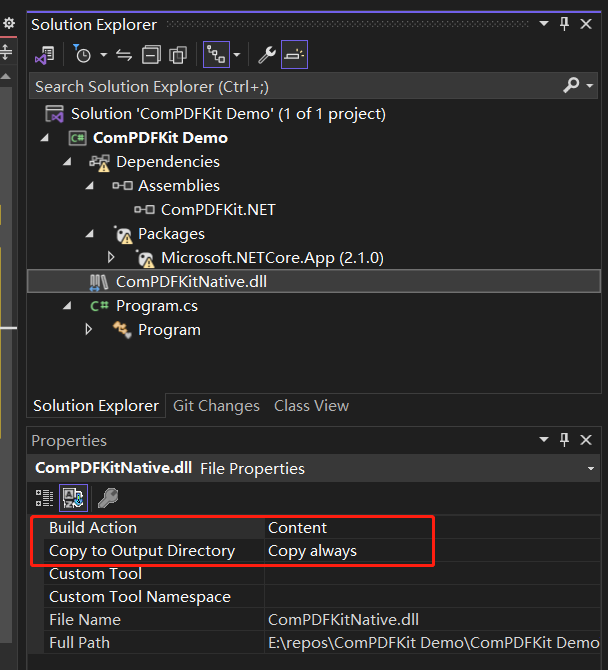Get Start With Windows
Run the Samples
- Open the solution file 'Example. sln' in Visual Studio.
- Select a sample project in Solution Explorer and set it as the startup project. CS and VB examples are currently available.
- Build and run the example.
Or you can open the command line tool in the project folder and run the example through the command:
dotnet runIntegrate into Your Application
You can follow the manual or nuget integration described below. This section will help you build your first ComPDFKit application. If you can open, save, and close PDFDoc, you can easily integrate the rest of the ComPDFKit PDF SDK.
Integrate Manually
- Open a new instance of Visual Studio 2022and create a new .NET Core console application project (
File > New > Project...). You can find this under the Visual C# menu.
Click on OK and allow the IDE to create the project.

- Find the Solution Explorer on the right side of the screen. Select the project and press
Alt + Enter. This will open the properties tab.
Alternatively, you can right click on the project and find the properties option.
Select .NET Core 2.1 (or above) as the target framework for your application.

If you are using a Windows x64 machine for your .NET Core development, you can use NuGet package manager to get the ComPDFKit PDF SDK. Otherwise, please integrate the SDK manually.
- Right-click "Dependencies" and click "Add Project Reference", which will open the "Reference Manager" dialog box. Click the option at the bottom of the dialog box, find the corresponding "ComPDFKit.NET.dll", select it and click Add.

- In the Solution Explorer, select the project and press
Shift + Alt + A. With this you can Add an Existing Item.
Alternatively, you can right click on the project and find the Add an existing item... option under the Add submenu.
Navigate to the library location again, select the file type as All Files (*.*) and select ComPDFKitNative.dll. Click Add.
- Select ComPDFKit.NET.dll in the solution explorer. A properties window should appear below. In it, change the Build Action setting to
Contentand the Copy to Output Directory setting toCopy always. To avoid errors, use the drop-down menus available for those fields.

Integrate with NuGet
Perform the first 2 steps of integrating manually.
Right click on project Dependencies and click on
Manage NuGet Packages.... This will open the NuGet Package ManagerClick on the
Browsetab near the top of the package manager. In the search bar enter:ComPDFKit.NetCoreSelect the
ComPDFKit.NetCorepackage by PDF Tecnologies Inc. and click on theInstallbutton in the panel with the package information. If you're prompted or an external dialog is opened for confirmation, click onOk.After installation, you will see the reference to the package under Dependencies in Solution Explorer.
Create PDF Document
We have completed all the preparation steps. Now let's use the ComPDFKit PDF SDK to create a PDF file with a blank page, and replace your Program. cs file with the following code. Note that you need to replace your license in the 'LicenseVerify()' method.
using ComPDFKit.NativeMethod;
using ComPDFKit.PDFDocument;
using Microsoft.Win32;
using System.Reflection.Metadata;
using System.Windows;
namespace ComPDFKit_Demo
{
public class Program
{
private static bool LicenseVerify()
{
if (!CPDFSDKVerifier.LoadNativeLibrary())
return false;
LicenseErrorCode verifyResult = CPDFSDKVerifier.LicenseVerify("Input your license here");
return (verifyResult == LicenseErrorCode.E_LICENSE_SUCCESS);
}
public static void Main()
{
LicenseVerify();
CPDFDocument document = CPDFDocument.CreateDocument();
// Insert to the first page
int pageIndex = 0;
int pageWidth = 595;
int pageHeight = 842;
//The InsertPage method can specify an image path. When the image path is empty, a blank page will be inserted.
document.InsertPage(pageIndex, pageWidth, pageHeight, "");
document.WriteToFilePath("new_file.pdf");// Save the entire document object to the current path.
Console.WriteLine("Done. Results saved in new_file.pdf");
}
}
}After running the program, please check the output file generated by the program. You will find that a PDF file with blank pages has been generated, and by default, it should be in the bin/Debug directory where your project files are located.